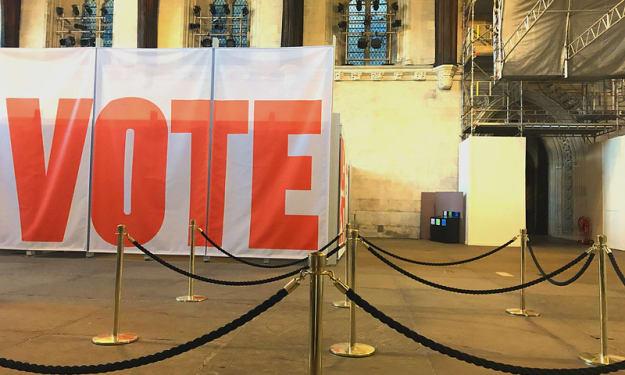Rye Celebrates 350th Anniversary
Westchester town has a tenacious past.

Photo by Eduardo Mueses
The home of John Jay, Rye celebrates its 350th anniversary this year. Historically rich, a “Tenacious” population of African American survivors and Gilded Age railroad commuters, the Knapp House, and the Square House are leading the celebration. With a series of events, the Rye Historical Society will capture the past and light up the summer for its attentive residents.
Built in 1663, the Knapp House is featuring a running exhibition called “Tenacity,” which highlights 350 years of African Americans in Rye. The first evidence of a slave transaction took place when Rye’s John Ogden sold “Antony” to a Richard Floyd of Brookhaven. "That allows us to initiate the discussion of slavery in Rye," said the Knapp House’s Richard Hourihan, archivist of the Rye Historical Society.
At the center, Rye is John Jay—1st Chief Justice to the Supreme Court and governor of New York. “He signed the gradual emancipation act of 1799,” said Hourihan, “and was the president of the New York Manumission Society.”
A Product of Their Time
But, as is to be expected, delving deeper into the history is less clear-cut. “It’s problematic,” added Hourihan.
The reality of the time must be taken into account. New York was still an agrarian society and removing the economic system wasn’t so easy for the very people who were also arguing against it. "Including John Jay," said Hourihan, “many prominent slave owners were members of the New York Manumission Society.”
On the other hand, the area was certainly home to those who rose above the conflict of interests that were prevalent. For example, just prior to state abolition in 1837, a fugitive slave named Peter John Lee was extradited back to his owner as stolen property. “It was a cause celebre and the people in Rye were outraged,” Hourihan said.
The Tenacity of the Time
The same kind of split personality accompanies the exhibition’s discussion of Amos Williams, who was a member of the 131st U.S. Colored Regiment.
Exhibiting newspaper accounts from 1888, much flag waving went along with erecting Rye’s Civil War Cemetery—this even though many rich residents were able to purchase their way out of conscription.
Unmentioned are Williams and other African Americans who fought in the war. They were also segregated to the adjoining cemetery. “That’s why the exhibit is called tenacity,” clarified Hourihan.
Rye picks a winner.
Otherwise, civil war was not new to Rye because of the American Revolution. In a sense, the war for independence can be seen as a civil war, and the same sort of everyday reality applied. “We need to put ourselves in their place,” Houlihan said. "Because it often came down to which side do you think is going to win.”
Additionally, since New York was under British control for the duration, the people of Rye had to be attuned to this proximity in making a stand.
Nonetheless, standing out among the aristocracy was John Jay. “Most landed people sided with the incumbent government, but Jay was different,” said Hourihan.
Re-enacting the Past
Ebenezer Haviland of the Square House also took a risky and principled stand, which gives the Historical Society perfect segue. An actual Revolutionary militia will take to the field at Rye Town Park. “The Militia is called the Sheldon’s Light Horse Dragoons and they’ve been considered an active militia since the Revolution,” said Rye Historical Society President, Sheri Jordan.
Regardless, they’ll leave the muskets unloaded, re-enact the battles, and demonstrate the equestrian maneuvers that preceded military engagement. “There’s a process to getting the horses to fall into formation and then execute a charge,” said Jordan.
There will also be colonial music, uniform-making, and an old-fashioned clam bake at Oakland Beach. But Hourihan feels it’s important to recognize Rye’s own revolution for independence in the 20th century.
Writing Today’s History
The formation of the village in 1904 gave the area a sense of identity beyond just being a gilded age escape for the rich. In other words, Rye’s experiment in self-government begins. “People really start getting involved in politics. What the city looks like, how it should expand, and where tax dollars should be spent," said Hourihan.
For example, in 1928, Rye took advantage of that newfound independent spirit to maneuver through the political waters required to create Playland.
In keeping the spirit of activism, The Square House is giving students the chance to document history as it unfolds. The “Day in the Life” exhibit and competition might have a high school student comparing the vast differences in a day at the beach today in various eras.
The winners will go into the historical record itself. “The photos will become part of the archives,” said Jordan.
That leaves Rye at a place in which the continuing record of its historical contributions will not die with this generation, and a foundation set for the succeeding ones ahead.
Author can be reached at [email protected]
About the Creator
Rich Monetti
I am, I write.






Comments
There are no comments for this story
Be the first to respond and start the conversation.